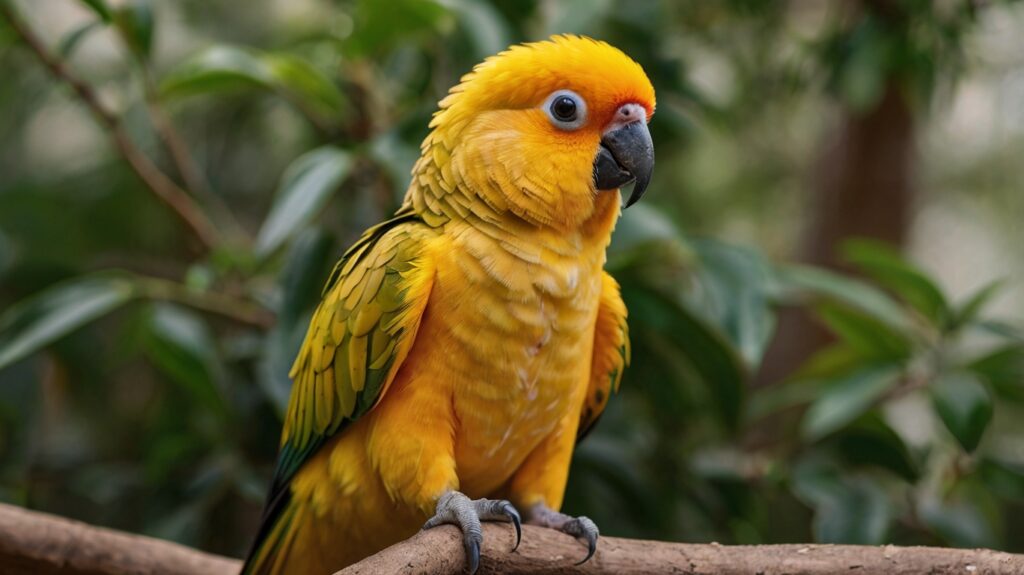Table of Contents
- Introduction
- Physical Characteristics
- Habitat and Distribution
- Behavior and Diet
- Breeding and Lifespan
- Conservation Status
- Keeping Golden Conures as Pets
- Conclusion
- FAQs
Introduction
The Golden Conure (Guaruba guarouba), also known as the Queen of Bavaria Conure, is a strikingly beautiful parrot native to Brazil. Renowned for its vibrant golden-yellow plumage and playful personality, this bird is highly sought after by avian enthusiasts. However, due to habitat loss and illegal trapping, it is classified as a vulnerable species. This guide explores its characteristics, natural habitat, behavior, and conservation efforts.

Physical Characteristics
The Golden Conure is easily recognizable by its bright golden-yellow feathers, with subtle green wingtips. Key features include:
- Size: 34–36 cm (13–14 inches) in length
- Weight: 250–300 grams
- Beak: Strong, curved, and pale in color
- Eyes: Dark brown with a white eye-ring
- Lifespan: Up to 30 years in captivity
Habitat and Distribution
This species is endemic to the Amazon rainforest in northern Brazil, particularly in:
- Maranhão
- Pará
- Amazonas
They prefer lowland tropical forests, often nesting in tree cavities. Deforestation has significantly reduced their natural range.
Behavior and Diet
Golden Conures are highly social, often seen in flocks of up to 30 birds. Their diet consists of:
- Fruits (mangoes, figs)
- Seeds and nuts
- Flowers and buds
- Occasional insects
They are known for their loud calls and playful antics, making them lively companions.
Breeding and Lifespan
- Breeding Season: November–February
- Clutch Size: 2–4 eggs
- Incubation Period: 30 days
- Fledging: 8–9 weeks
In captivity, they require spacious enclosures and a protein-rich diet for successful breeding.
Conservation Status
The Golden Conure is listed as Vulnerable (IUCN) due to:
- Habitat destruction (logging, agriculture)
- Illegal pet trade
- Limited breeding success in the wild
Conservation programs focus on habitat protection and captive breeding initiatives.
Keeping Golden Conures as Pets
While captivating, they require:
- Large, sturdy cages
- Mental stimulation (toys, puzzles)
- Social interaction
- Balanced diet (pellets, fresh fruits, vegetables)
Potential owners should ensure legal compliance, as international trade is restricted under CITES.
Conclusion
The Golden Conure (Queen of Bavaria Conure) is a magnificent yet endangered parrot species. Protecting its natural habitat and supporting conservation efforts are crucial for its survival. Responsible pet ownership and breeding programs can help preserve this stunning bird for future generations.
FAQs
1. Why is the Golden Conure endangered?
Due to deforestation and illegal trapping for the pet trade, their wild population has declined sharply.
2. Can I legally own a Golden Conure?
In many countries, ownership is restricted under CITES. Always check local wildlife laws.
3. How long do Golden Conures live?
In captivity, they can live up to 30 years with proper care.
4. What do Golden Conures eat?
Their diet includes fruits, nuts, seeds, and occasional insects.
5. Are Golden Conures noisy?
Yes, they are vocal birds with loud calls, especially in the morning and evening.
